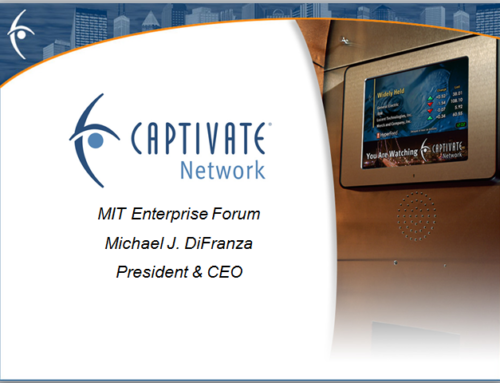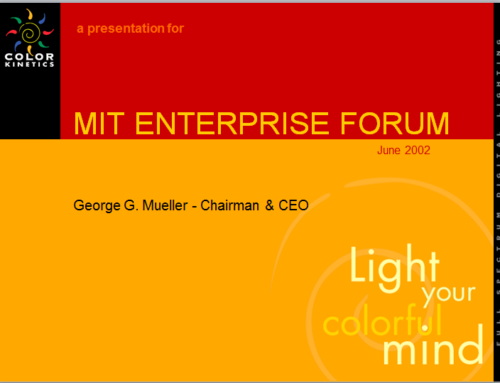Introduction
The present study wants to reveal what is the qualitative Ethnographic Research (ER) method about, what is their scope, under what circumstances is advantageous to use, the limitations and some recommendations to have the best understanding. The inspiration starts with the successful experience of Hyundai and the use of their own ER method called “Touch the Market” that allowed the company to make a new innovative approach to customers, combining data with creativity reformulating their Santa Fe car, launching in 2007 a new generation, bringing to life the attributes and specifications that targeted customers (Glamour Moms) wanted from the product (Kluter & Mottram, 2007).
Analysis
What is the Ethnographic Research Method?
The ER is a qualitative research method developed by anthropologists, and can be defined it terms of the study of the people´s behavior in its natural environment setting. This means that researchers try to understand and interpret the situation being observed from the perspective of the participants (Nurani, 2008). In a business world approach, it is observing how customers behave while they use products or services and make purchasing decisions. Allows people to describe their world with in their own terms, accompanying them in their home, office, travels, shopping at a supermarket or anywhere, making the appropriate observations (Jackson, 2008).
Characteristics
Although ER belongs to the qualitative methods family, it has some special qualities that make it different: (1) its goal is to find what people actually say and do by the use of observational and interviewing techniques that enables a full understanding of the context surrounding the topic in hand, (2) studies take place within the natural setting where relevant people´s behavior and events occur, (3) the method is participant driven instead of the traditional research driven (Johnston, 2009), and (4) is absent of an initial hypothesis witch help researcher to avoid any preconceived idea that can potentially influence the interpretation’s accuracy (Nurani, 2008).
When do we use it?
When using ER, companies want more than the mere results of the observations from the studies, they need something concrete to work from, something actionable that can be translated to business recommendations (Colyer, 2003). Also, sometimes they require understanding the “big picture” of a situation (Bellotti, 2010).
ER can be invaluable in the early stages of product/services development or rethinking and improving business processes (Jackson, 2008), or for identifying requirements that will be used in the design of the specifications of a product or solution, or in testing stages that involve the understanding between the real and ideal performance of a product, or for figuring for what and the way people use products (Bellotti, 2010), or finally to capture latent customers’ needs that can only be identified by observation.
However, this method is not a panacea; for example, if a product is losing market share ethnography will not have the adequate answer, because it is not good at linking marketplace behavior with strategic management causes (Colyer, 2003).
Limitations and critiques to the method
Some limitations is that ER is time and labor intensive and most important, it requires specialist professional researchers, the anthropologist ethnographers, that are trained to decode things and are aware of picking up contextual clues (Colyer, 2003).
By the other hand, the method has some critics that are related with (1) the unscientific of the method because its approach, that by definition involves small sample size, difficulting the replication, containing great amount of subjectivity and interpretation on the part of the researcher, (2) limited to enable generalization, because it focuses on a single or very small number of cases to understand better process and meanings, falling to provide few generalizable propositions, (3) concerns about representation related with the insufficiently self-conscious about the activities of observation. As a result, researchers may represent their own social vision of the world (Herbert, 2000), (4) problems related with reliability of the results, and the last critic is the lack of (5) internal validity when a conclusion of a study cannot be drawn in confidence (Nurani, 2008).
Conclusions
The ethnography is a qualitative research method that has become very popular between large companies like the BBC, Nokia, Intel (Colyer, 2003) or IBM, Microsoft, Pitney Brown, Procter & Gamble or Home Depot (Jackson, 2009) because it’s a customer-centric method that allow companies, by the observational way, gather new insights of the customers behavior, attitudes and needs, inspiring creativity to create market-driven products.
Recommendations
As we saw, ethnography has a lot of advantages, but we have to be aware of the limitations like the lack of reliability and validity and the limits in representation and generalization.
Taking this in consideration, ER methods can be recommended for exploring what Adams (2002) names as the “pain” of customers and conduct a rigorous up-front study to gain insights of their needs, validating the market. However, to use the 3 stages of the Pyramid of Influence method in the right way, we still recommend validating the market with a quantifiable market research tools (Adams, 2002). This brings us the major differences with quantitative research that draw conclusions from the results of statistical tests, which are based on sets of assumptions (Sandelowski, 2000).
By the other hand, ER is very recommendable to use in the Christensen´s (1999) “Jobs to be done framework” or the “Exploratory Space Matrix” because we are looking what actual customers do, asking and watching them to discover the job for witch the product was hired and understand the circumstances and reasons why customers may have purchased, thus matches very closely to ethnography.
Finally, for Kawasaki (2000) qualitative research has a place in creating revolutionary products. Moreover, observation of customers behavior allows detecting and communicating subtle findings and be aware of unforeseen opportunities. But most important is the concept of “don´t ask, just watch”. When people are asked about what they want, they think about how they supposed to answer, trying to look smart or influenced by others. Instead if you only watch them, their actions will speak for them.
References
Adams, R. (2002). A good hard kick in the ass: Basic training for entrepreneurs. New York, NY: Random House/Crown Business
Bellotti, V. (2010, June 1). Ethnography in industry: Objectives? Retrieved on June 11, 2012 from http://uxmag.com/articles/ethnography-in-industry-objectives
Christensen, C.M. (1999). Innovation and the general manager. Boston, MA: McGraw-Hill Irwin
Colyer, E. (2003, July 21). Taking a closer look at your customers. Retrieved on June 11, 2012 from http://www.brandchannel.com/features_effect.asp?pf_id=167
Jackson, S. (2009, August 6). Breakthrough market discoveries often hide out in latent form. Retrieved on June 10, 2012 from http://www.examiner.com/article/breakthrough-market-discoveries-often-hide-out-latent-form
Johnston, G. (2009, October 27). Ethnography: Your guide to doing it right. Retrieved on June 10, 2012 from http://www.aipmm.com/html/newsletter/archives/000362.php
Herbert, S. (2000). For ethnography. Progress in Human Geography. Retrieved on June 10, 2012 from http://www.geo.ntnu.edu.tw/faculty/moise/words/information/social/race%20and%20ethnic%20groups/for%20ethnography.pdf
Kluter, H. & Mottram D. (2007, June). Hyundai uses “Touch the Market” to create clarity in product concepts. PDM Vision Magazine.
Kawasaki, G. (2000). Rules for revolutionaries. New York, NY: HarperCollings Publishing Inc.
Nurani, L. (2008). Critical review of ethnographic approach. Journal Sosioteknologi Edisi 14 Tahun 7. Retrieved on June 11, 2012 from http://www.fsrd.itb.ac.id/wp-content/uploads/5%20Lusi%20Ethnography%20Approach.pdf
Sandelowski, M. (2000). Whatever Happened to qualitative description? Research in Nursing & Health. Chapel Hill: John Wiley & Sons, Inc.
Related articles
- Qualitative Research Methods (thinkingbookworm.typepad.com)
- Teaching Ethnography For User Experience: A Workshop On Occupy Wall Street (ethnographymatters.net)
- Ethnography in the public eye; a few lessons along the way (blogs.lse.ac.uk)
- Digital sociology part 3: digital research (simplysociology.wordpress.com)






Leave A Comment